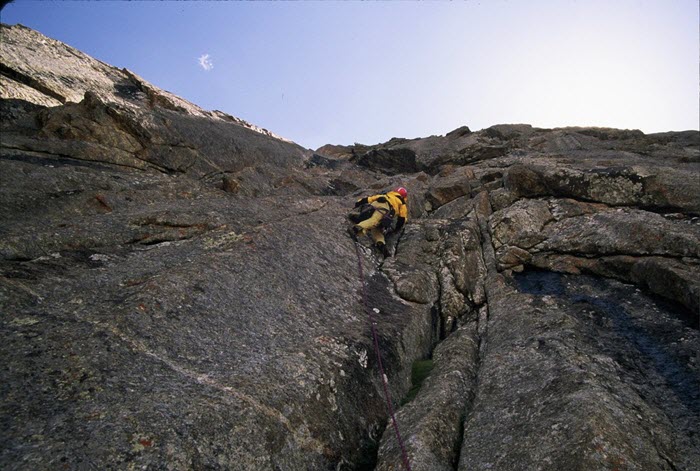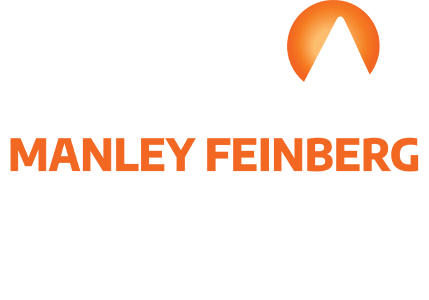It’s day three of our perilous climb up The Northwest Pillar of the Central Pyramid in the Aksu Valley, Kyrgyzstan. My Russian climbing partners, Dima and Jula, whom I had just met three days prior, and I are sore, tired, and out of provisions. The only thing keeping us going is the hope of reaching the summit that day.

At this point in our journey I was climbing on lead. I climbed as high as possible up onto the anchor that Dima had built and clipped directly into the uppermost piece of gear, a yellow #2 Metollius caming unit.
Jula’s and Dima’s heads were at my feet, and they worked to hand me the last pieces of gear leftover from Dima’s lead. The eerie silence and solitude of our position gave me a moment of brief clarity to focus and dig deeper into my soul’s reserves. That moment of peace was quickly destroyed by an exploding pop and the sickening sound of metal grinding against rock. Instantly I was launched into the air and felt myself rocketing towards the ground below. I then slammed with a riveting force directly on the remaining pieces of the anchor in a jolt that shocked my entire being.
My head was now below Dima and Jula’s feet, with all three of us and all of our gear swinging wildly in the void. There were more than 2,000 feet of air below, and gravity ruthlessly grasped at our feet, our lives dangling in the balance. One of the three gear placements in our anchor had failed. Typically, when anchors fail, people die. Especially in the high-impact scenario our accident created, a five foot strap I used to connect to the anchor, called a daisy-chain, has no dynamic ability to absorb critical impact forces that the climbing rope would typically handle. What might appear to be a safe and short ten-foot fall right at the anchor is the falling and anchor-failure scenario most climbers have learned to avoid at all costs.
I’m not going to tell you what I said next.
I can tell you this: it was the most colorful display of Kentucky English you can possibly imagine. It would have made the Devil repent and blush before the first sentence was out of my mouth. I went off on Dima, because his anchor had nearly killed us, and it was due to a simple error in executing the basics of building anchors.
I could teach you the basics and how to avoid the critical mistake Dima had made when he built an anchor in fewer than five minutes. I know he had the knowledge and skills to execute. I believe he just happened to overlook a critical detail; how well all sides of the device were engaged in the rock. He failed to evaluate the details of his placement, and then I happened to hang directly on the device in a way that exposed its weakness in that moment.
Unfortunately, in that moment, all of my fears and frustrations from the entire adventure erupted in my partners’ faces. After I let Dima and Jula know how I really felt about their safety systems and lack of focus on the basics, I rebuilt the anchor to my standards. First, I added two pieces of gear that were each capable of supporting us, and then I improved the two he had placed, and additionally equalized all four pieces so that any impact would be spread dynamically across all the gear. Establishing an anchor I could trust was absolutely essential before I could climb into the unknown again.
I’m not sure why we all survived that moment. Perhaps one reason is so I could share this experience with you now.
DON’T BLOW THE BASICS
Dima blew the basics. In The Vertical, fortunately I’ve only blown the basics three times, and fortunately in all three situations, I caught my own lack of execution before any consequences were realized.
In my day-to-day life, I’ve blown the basics countless times; most often it went unnoticed. This is dangerous and breeds complacency. Simple choices, small details, seem inconsequential in the moment. Ultimately, it can all catch up with you.
We all need anchors in our life. I’ve found that we don’t always have them, and in a sense, they may even be optional. Just as true growth is optional, we are in control; we can stay where we are and not leverage tools to give us the confidence to move forward. When we establish points in our lives we can count on—something to fall back on, a worst-case plan, illustrated in enough detail that at least in our minds we know it is possible, new expanses open before us. In a new moment of clarity, we are able to see through the fear that can blind us and see opportunities we couldn’t see before; or maybe we can see just far enough ahead to make the next move.
The anchor is a critical component in the art of Vertical passage and will serve you in reaching more of your potential in life as well. When people I’ve worked with have clarity around what protects them from absolute failure and destitution, they are able to move forward carefully and courageously. We need to know that if we fall, our belayer will lock off the rope and stop our fall. We need to know if a piece of gear we have placed on our lead along the way fails, the next one will stop us. And ultimately, we must be able to count on that anchor. We must know that no matter what, our anchor is going to hold up and keep the entire team from getting blown off the mountain.
“No power so effectually robs the mind of all its powers of acting and reasoning as fear.” Edmund Burke
To hear more stories from my trip to Kyrgyzstan check out my new book Reaching Your Next Summit!
Your climb to excellence is never easy. The human drive within calls us to what is possible. The principles shared in this book will renew your commitment and inspire your quest for excellence. You will realize more of your potential as you sharpen your focus, act with courage, and generate momentum in reaching your next summit—and beyond.

